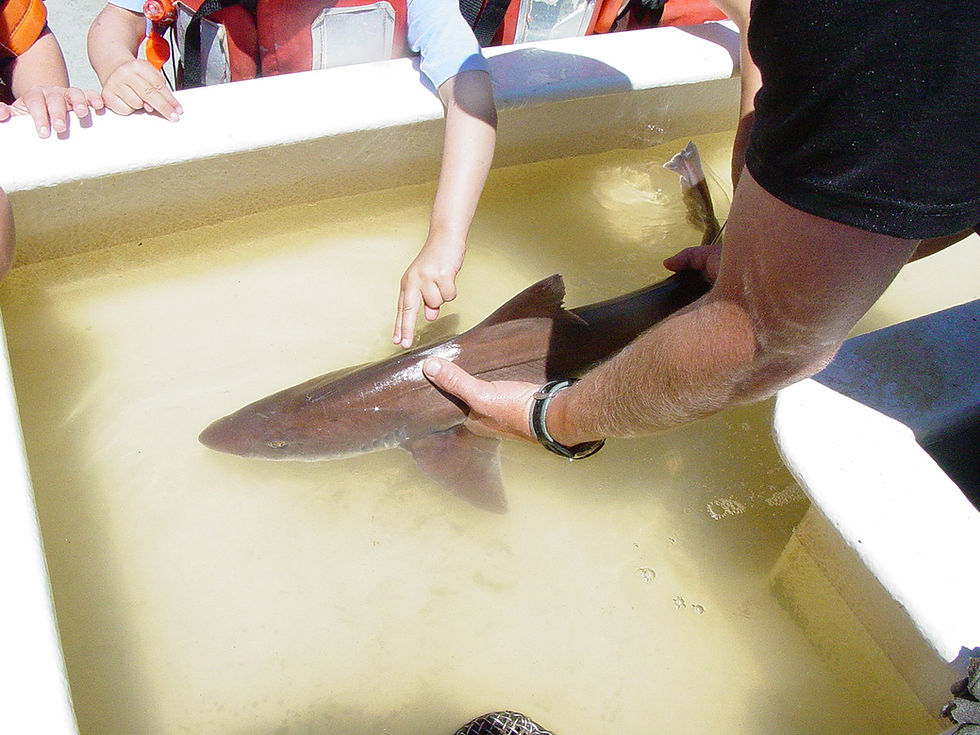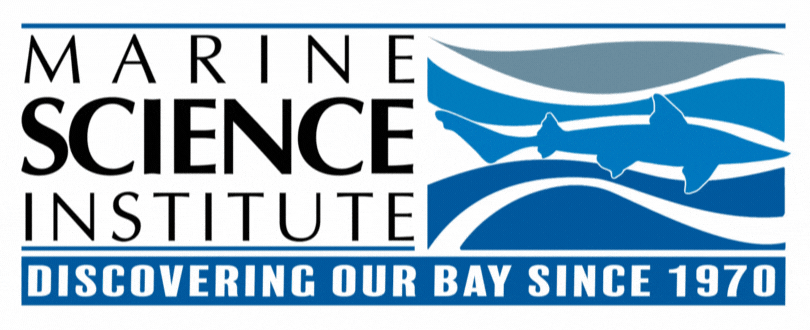When it's summer, get ready for chondrichthyes! CREATURE FEATURE: brown smooth-hound
- Naomi Deal

- Jul 26, 2018
- 2 min read
Updated: Aug 7, 2018
During the spring and summer seasons, we see an increase of cartilaginous fish populations in the SF Bay. This week's creature is the brown smooth-hound


The brown smooth-hound (Mustelus henlei ) is a common, abundant cartilaginous fish we find in the San Francisco Bay. Brown smooth-hounds are viviparous species, meaning embryos are nourished through a yolk-sac placenta while developing inside the mother shark's body. At Marine Science Institute, we witness lots of incredible animal activity and phenomena, including...
shark pup births! (pictured right)

Brown smooth-hound litter counts can range between 1-21 pups, but the average is 3-5 pups per litter. These young sharks measure between 7.5-11.8 inches in length at birth. Sexual maturity is reached when they measure between 1.6-2.3 feet, and at this length, they could be anywhere between 2-4 years old. Although mature brown smooth-hound sharks average at 2 feet, they can grow over 3 feet in length.
These small, slender bodied sharks are present in coastal waters of the eastern Pacific Ocean and prefer the muddy, sandy bottoms of bays. In California, there are local populations present in Humbolt, Tomales and San Francisco Bays. Being bottom dwelling sharks, they prey on a variety of animals that you might also find at the bottom such as crabs, shrimps, isopods, worms and tunicates. As adults, they add more bony fish to their diet such as gobies and flatfish.
Are there animals in the San Francisco Bay that prey on brown smooth-hounds?
Yes! In fact, last week's featured creature, the broadnose sevengill shark (Notorynchus cepedianus) is a known predator of the brown smooth-hound.
Produced and Edited by Naomi Deal
__________________________________________________________________________________
Resources and References:
Bester, Cathleen. Mustelus henlei . Ichthyology Collection. Dickinson Hall Florida Museum. University of Florida. 2018. https://www.floridamuseum.ufl.edu/fish/discover/species-profiles/mustelus-henlei/ July 2018.
Pérez-Jiménez, J., Carlisle, A.B., Chabot, C.L., Vásquez, V.E. & Ebert, D.A. 2016. Mustelus henlei. The IUCN Red List of Threatened Species 2016: e.T161648A80672263. http://dx.doi.org/10.2305/IUCN.UK.2016-2.RLTS.T161648A80672263.en. July 2018.







Comentarios